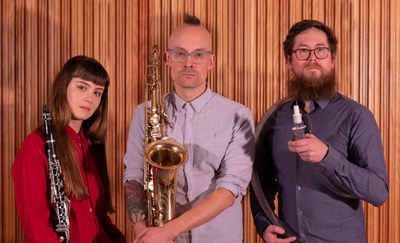Program
Paul BUSER, Linnea KIRBY, and Kasey POCIUS - Planting Seeds: An inaugural performance of the t-Tree
Paul Buser and Linnea Kirby (t-Tree, dance and electronics), Christiana Rose (electronics), Kasey Pocius (electronics and dance)
Kevin GIRONNAY - Déambulations (2021) for piano, cello, violin & electronics
Kevin Gironnay (electronics), Jeanne Côté (violin), Audréanne Filion (cello), Gabrielle Picard (piano)
Weather Vane Collective
Quentin LAUVRAY - Enfants, apprenez-nous à parler* (2022) [10 minutes]
Tommy Davis (eTube), Quentin Lauvray (electronics), Kasey Pocius (spatialization), Vincent Cusson (technical assistance)
Kevin GIRONNAY - Inframince: Feedback Variations* (2022) [12 minutes]
Greg Bruce (feedback saxophone)
Tommy DAVIS and Greg BRUCE - Improvisation Frameworks* (2022) [8 minutes]
Tommy Davis (eTube), Greg Bruce (feedback saxophone), Kasey Pocius (electronics)
Maryse LEGAULT - A hundred waves* (2022) [6 minutes]
Maryse Legault (clarinet)
*denotes world premiere
Ticket Reservations
This event is open to the general public and free with reservation. Tickets are available through the Schulich School of Music box office. *Now Open*
*For CIRMMT students wishing to have their attendance tracked for awards eligibility, please ensure to reserve your own ticket via the box office
We welcome you to share this event via Facebook.
Program Notes
Déambulations is a live-generated piece, meaning that while the main structure of the piece has been set, the score and the electronics will always be different. With each performance, Déambulations is anchored in that specific moment you and the musicians share with the piece. The result is something that feels like taking a stroll where musicians and electronics move together, sometimes apart, sometimes intertwined or tangled, but always advancing in a common direction that has, as the performance unfolds, not yet been defined.
Planting Seeds: You might look at us and think, I wish I could do that. And that's exactly the point! With the t-Tree, we wanted to make the t-Stick (the long pipe-looking instrument) more accessible to all. Special thanks to Luca Crisi in Rome, whose patches inspired some of the sounds you hear tonight.
Enfants, apprenez-nous à parler (Children, teach us how to speak) is a piece for eTube and live electronics. The piece is based on an article by Brandt & al. (2012) which shows that the language acquisition in infants is first a musical process. The infant, progressively, playfully, and by a non-linear learning process, selects the sounds they can produce from the chaos of their screams, babbling, comings, and exclamations. Through imitative games and independent explorations, interspersed with the urgent need to express oneself and occasional contemplative silence, the baby learn how to shape phonemes, words, phrases. Based on this idea, the piece is organized in different « learning steps » in which recognizable sounds are extracted from complexe and semi-improvised textures. Those sounds gather and are arranged to create more complexe configurations and musical phrases. The electronics, which include an improvising agent, act like an external stimuli (a parent) creating pressure on the evolution of the musical discourse, insisting on certain sounds, but which is not insensitive to the musician’s propositions.
Inframince: Feedback Variations: Written specifically for Greg Bruce's feedback saxophone setup, Feedback Variationsis is inspired by the balance between Greg's virtuosity and the subtle fragility of his performance system. This piece highlights the relationship between performer and instrument by generating the score and electronics live, leaving Greg to create and perform in an active and unstable position.
A hundred waves is a work for clarinet and tape based on the sonic universe of the synthesizer music pioneer Suzanne Ciani. Conceived by the clarinetist Maryse Legault, the piece amalgamates mixed music, modified sound in real time and electronic music. The sounds used in the piece are are inspired by the classical synthesizers that Suzanne Ciani is known to have used throughout her career, such as the Buchla, the Prophet and the Moog. The sound of the clarinet is modified in real time by connecting the instrument to a software on the computer via a microphone and transformed in order to layer the timber of the clarinet with a synthesized sound. This allows the performer to use the unique character of the human breath and the wooden texture of the clarinet, while creating a sound approaching Ciani’s synthesis soundscape. The same way she frequently juxtaposes the piano with synthesizers in her compositions, the performer uses acoustic and electronic instruments together within a single piece.
Biographies
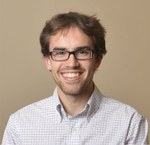 Paul Buser is a Master's student at McGill University's Instrument Design and Interaction Laboratory (IDMIL). He loves new kinds of musical interfaces! Paul also plays a one-man improvised electronic music show, BEEPY VERSION, which debuts its Fall 2022 season at Le Depanneur Cafe.
Paul Buser is a Master's student at McGill University's Instrument Design and Interaction Laboratory (IDMIL). He loves new kinds of musical interfaces! Paul also plays a one-man improvised electronic music show, BEEPY VERSION, which debuts its Fall 2022 season at Le Depanneur Cafe.
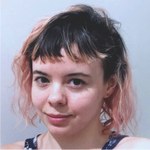 Linnéa Kirby is a self-proclaimed "Contemporary Renaissance Person," with interests ranging from the creative to the analytical. Linnea received a B.A. in Psychology with a concentration in Cognitive Sciences and a minor in Computer Science from Oberlin College in 2016. She graduated from a year of the New England Center for Circus Arts (NECCA)’s PROTrack program in 2018, where she majored in contortion and unofficially minored in Chinese Pole. She is now pursuing a Master's in electrical engineering at McGill University's Shared Reality Lab (SRL).
Linnéa Kirby is a self-proclaimed "Contemporary Renaissance Person," with interests ranging from the creative to the analytical. Linnea received a B.A. in Psychology with a concentration in Cognitive Sciences and a minor in Computer Science from Oberlin College in 2016. She graduated from a year of the New England Center for Circus Arts (NECCA)’s PROTrack program in 2018, where she majored in contortion and unofficially minored in Chinese Pole. She is now pursuing a Master's in electrical engineering at McGill University's Shared Reality Lab (SRL).
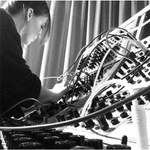 Christiana Rose is an interdisciplinary artist who blends the disciplines of sound, circus arts, cinema, dance, theater, and interactive technology. Rose's work often involves collaboration and specializes in improvisation. She holds degrees in Technology in Music and Related Arts (TIMARA) and Cinema Studies from Oberlin College and Conservatory of Music (B.A./B.M.) and a M.A. in Digital Musics from Dartmouth College. Rose is also a graduate of The Prague Film School and MOTH Contemporary Circus Center. She has presented work at NYCEMF, NIME, MOCO and Notam. She loves exploring the tangled web of relationships between humans, nature, and machines. Currently, Rose is a senior engineering technician for research and development at QSC/Q-SYS in Boulder, CO.
Christiana Rose is an interdisciplinary artist who blends the disciplines of sound, circus arts, cinema, dance, theater, and interactive technology. Rose's work often involves collaboration and specializes in improvisation. She holds degrees in Technology in Music and Related Arts (TIMARA) and Cinema Studies from Oberlin College and Conservatory of Music (B.A./B.M.) and a M.A. in Digital Musics from Dartmouth College. Rose is also a graduate of The Prague Film School and MOTH Contemporary Circus Center. She has presented work at NYCEMF, NIME, MOCO and Notam. She loves exploring the tangled web of relationships between humans, nature, and machines. Currently, Rose is a senior engineering technician for research and development at QSC/Q-SYS in Boulder, CO.
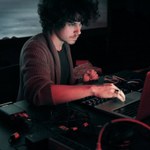 Based in Montreal, Kevin Gironnay creates acousmatic and mixed music, produces music for sound installations, videos and dance, and performs improvised music, in solo or collaborations. He has been influenced by the teaching of Christine Groult, Nicolas Bernier, Horacio Vaggione, Denis Dufour, Jacopo Baboni Schilingi, Lorenzo Bianchi and Giacomo Platini.
He is the founder and artistic director of Ensemble ILÉA ; also a member of the collective Unmapped and of CIRMMT. In 2020, he also co-founded Virage Sonore, a production studio for podcasts and sound art.
Based in Montreal, Kevin Gironnay creates acousmatic and mixed music, produces music for sound installations, videos and dance, and performs improvised music, in solo or collaborations. He has been influenced by the teaching of Christine Groult, Nicolas Bernier, Horacio Vaggione, Denis Dufour, Jacopo Baboni Schilingi, Lorenzo Bianchi and Giacomo Platini.
He is the founder and artistic director of Ensemble ILÉA ; also a member of the collective Unmapped and of CIRMMT. In 2020, he also co-founded Virage Sonore, a production studio for podcasts and sound art.
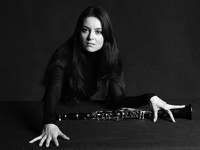 Maryse Legault received her master’s degree at the Koninklijk Conservatorium Den Haag in June 2017, specializing in historical clarinet performance in the studio of Eric Hoeprich. The first graduate from Quebec in the field of historical clarinets, Maryse is specializing her research in the virtuoso phenomenon of the turn of the 19th century. She has written the first comprehensive biography of the 18th-century international clarinetist Josef Beer (1744-1812) and is currently pursuing a PhD in musicology at McGill University.
Maryse Legault received her master’s degree at the Koninklijk Conservatorium Den Haag in June 2017, specializing in historical clarinet performance in the studio of Eric Hoeprich. The first graduate from Quebec in the field of historical clarinets, Maryse is specializing her research in the virtuoso phenomenon of the turn of the 19th century. She has written the first comprehensive biography of the 18th-century international clarinetist Josef Beer (1744-1812) and is currently pursuing a PhD in musicology at McGill University.
 Quentin Lauvray is a French-American composer of acoustic, electronic and mixed music based in Montreal. He studied in the Conservatoire of Toulouse in France, and obtained Bachelor and Masters degrees from McGill University under the supervision of Chris-Paul Harman and Philippe Leroux. His music is performed by international ensembles around the world, including Ensemble Cairn, Orchestre de Radio France, Nouvel Ensemble Moderne, Meitar Ensemble, Ukho ensemble, among others. His music is the synthesis of his interests for research (in perception and cognition of music), new technologies (A.I., computer assisted composition, etc.) and literature. He is published by BabelScore.
Quentin Lauvray is a French-American composer of acoustic, electronic and mixed music based in Montreal. He studied in the Conservatoire of Toulouse in France, and obtained Bachelor and Masters degrees from McGill University under the supervision of Chris-Paul Harman and Philippe Leroux. His music is performed by international ensembles around the world, including Ensemble Cairn, Orchestre de Radio France, Nouvel Ensemble Moderne, Meitar Ensemble, Ukho ensemble, among others. His music is the synthesis of his interests for research (in perception and cognition of music), new technologies (A.I., computer assisted composition, etc.) and literature. He is published by BabelScore.
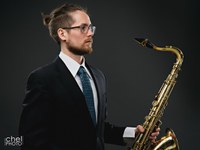 Tommy Davis is currently a doctoral candidate and SSHRC Doctoral Fellow at McGill University’s Schulich School of Music under the tutelage of Marie-Chantal Leclair. His research investigates live electronic music performance and computer improvisation through a research-creation project called eTu{d,b}e. His current research interests include improvisation, contemporary saxophone techniques, posthumanism, and human-computer interaction and agency in computer music performance. With a Student Award (2021–22) from CIRMMT at McGill University, Tommy developed an augmented instrument called the eTube alongside instrument builder and programmer Vincent Cusson. As a CIRMMT student co-representative, Tommy organizes educational, outreach, and research events for over 250 student members.
Tommy Davis is currently a doctoral candidate and SSHRC Doctoral Fellow at McGill University’s Schulich School of Music under the tutelage of Marie-Chantal Leclair. His research investigates live electronic music performance and computer improvisation through a research-creation project called eTu{d,b}e. His current research interests include improvisation, contemporary saxophone techniques, posthumanism, and human-computer interaction and agency in computer music performance. With a Student Award (2021–22) from CIRMMT at McGill University, Tommy developed an augmented instrument called the eTube alongside instrument builder and programmer Vincent Cusson. As a CIRMMT student co-representative, Tommy organizes educational, outreach, and research events for over 250 student members.
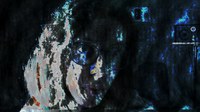 Originally from St. John’s, Kasey Pocius is a gender fluid intermedia artist located in Montreal who grew up experimenting with multimedia software while also pursuing classical training in both viola and piano. In late 2014, Kasey began to concentrate more intensively on the creation of digital audio works. Outside of fixed electronic works, they have also pursued mixed media performances with live electronics, both as a soloist and in comprovisatory collaborative environments such as CLOrk, Exit Points & Fillesharmoniques. They are particularly interested in multichannel audio works and spatialization, and how this can be used in group improvisatory experiences. They hold a BFA from Concordia in Electroacoustic Studies and are currently pursuing an MA in Music Technology at McGill under the direction of Dr. Marcelo M. Wanderley. They are also the current Technical Coordinator at Matralab.
Originally from St. John’s, Kasey Pocius is a gender fluid intermedia artist located in Montreal who grew up experimenting with multimedia software while also pursuing classical training in both viola and piano. In late 2014, Kasey began to concentrate more intensively on the creation of digital audio works. Outside of fixed electronic works, they have also pursued mixed media performances with live electronics, both as a soloist and in comprovisatory collaborative environments such as CLOrk, Exit Points & Fillesharmoniques. They are particularly interested in multichannel audio works and spatialization, and how this can be used in group improvisatory experiences. They hold a BFA from Concordia in Electroacoustic Studies and are currently pursuing an MA in Music Technology at McGill under the direction of Dr. Marcelo M. Wanderley. They are also the current Technical Coordinator at Matralab.
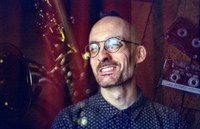 Greg Bruce is a multifaceted saxophonist, improvisor, and composer from St. John’s, Newfoundland and Labrador, Canada whose work blurs the lines between classical, jazz, folk, and pop. Greg has led a successful career as a music freelancer and bandleader, having performed, toured, and recorded with a wide variety of projects in North America and Europe. As a Doctor of Musical Arts Candidate at the University of Toronto and a Social Sciences and Humanities Research Council Doctoral Fellow, Greg is also an accomplished artist-researcher. His current research-creation innovates the relationship between analogue technology and acoustic instruments through novel work in feedback saxophone.
Greg Bruce is a multifaceted saxophonist, improvisor, and composer from St. John’s, Newfoundland and Labrador, Canada whose work blurs the lines between classical, jazz, folk, and pop. Greg has led a successful career as a music freelancer and bandleader, having performed, toured, and recorded with a wide variety of projects in North America and Europe. As a Doctor of Musical Arts Candidate at the University of Toronto and a Social Sciences and Humanities Research Council Doctoral Fellow, Greg is also an accomplished artist-researcher. His current research-creation innovates the relationship between analogue technology and acoustic instruments through novel work in feedback saxophone.
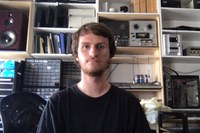 Vincent Cusson's projects investigate generative, immersive, and interactive audio in various interdisciplinary art installations and performances. He completed a Bachelor’s in Interactive Media at UQAM and has been assistant researcher for six years at nxi gestatio design lab(NXI). In fall 2019, he began a master’s degree in Music Technology at McGill. He is currently collaborating on different projects with researchers from CIRMMT and Input Devices and Music Interaction Laboratory(IDMIL).
Vincent Cusson's projects investigate generative, immersive, and interactive audio in various interdisciplinary art installations and performances. He completed a Bachelor’s in Interactive Media at UQAM and has been assistant researcher for six years at nxi gestatio design lab(NXI). In fall 2019, he began a master’s degree in Music Technology at McGill. He is currently collaborating on different projects with researchers from CIRMMT and Input Devices and Music Interaction Laboratory(IDMIL).
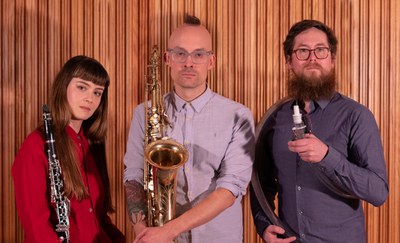 Weather Vane was recently established by six Montreal-based artists over their shared interest for augmented wind instrument performance including spatialized electronics, performance gesture, and analogue technology. The collective strives to demonstrate a diversity of approaches to augmented instruments, highlighting the creative potential of technologically extended woodwinds. These approaches divergently (dis)engage with analogue and digital media, high-tech and lo-fi, and mixed music. Comprised of performers, composers, technologists, composer-performers, and improvisers, Weather Vane wishes to blur the lines of traditional creation processes by implicating performer research, improvisation, and instrument design to create new works for customized wind instrument designs. This live@CIRMMT performance marks their first endeavor as a collective.
Weather Vane was recently established by six Montreal-based artists over their shared interest for augmented wind instrument performance including spatialized electronics, performance gesture, and analogue technology. The collective strives to demonstrate a diversity of approaches to augmented instruments, highlighting the creative potential of technologically extended woodwinds. These approaches divergently (dis)engage with analogue and digital media, high-tech and lo-fi, and mixed music. Comprised of performers, composers, technologists, composer-performers, and improvisers, Weather Vane wishes to blur the lines of traditional creation processes by implicating performer research, improvisation, and instrument design to create new works for customized wind instrument designs. This live@CIRMMT performance marks their first endeavor as a collective.
Acknowledgements
Additional support for Weather Vane's performances provided by Canada Council for the Arts, Conseil des Arts de Montréal, and SSHRC, in addition to the IDMIL (McGill) and TaPIR (University of Toronto) laboratories.





